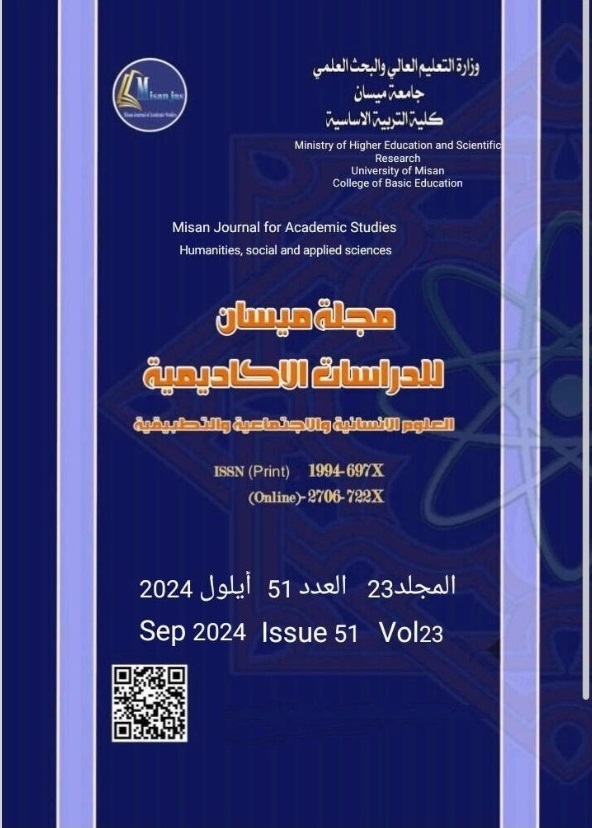Demographic Transitions and Spatial Reallocation of Population Variables in the Administrative Territories of Al-Majar Al-Kabeer District Over the Period 1997-2022
Abstract
The issue of population disparity is a subject of interest for researchers, as the study of population distribution is related to the place and society, and their demographic movement according to administrative units. The research aimed to identify the nature of the demographic balance of the population variables in the study area and their population characteristics, including their distribution and the geographic factors affecting this distribution. However, this study relied on both theoretical and practical aspects, which addressed the development of the population and its relationship to natural and human factors. The result was that geographic factors have a clear impact on the distribution of the population of the district and the difference in their demographic balance, and the varying degree of influence of these factors in drawing the geographic distribution of the population. We note that the population of the district increased from (85,952 people) in 1997 to (172,116 people) in 2022, as these numbers varied according to the administrative unit and the environment.
The urban environment recorded the highest population of (129,490 people), while in the rural environment, the population reached (42,626 people) in 2022. The district center represents the highest distribution in the urban environment, with a population of (101,493 people), while the lowest distribution of the population is in the Al-Khayr district, with a population of (9,682 people). This is due to the difference in the demographic balance of the population of the study area at the level of the two environments due to the availability of services and the high economic level, and the presence of administrative institutions in the urban environment, which made the district center a center for attracting the population and migration to it from other areas, while the rural environment suffers from low economic and service levels, dry climatic conditions, lack of job opportunities, and weak community services, which encouraged migration towards urban centers in general and the district center in particular. The population density recorded (105.9 people/km²) in 2022, after it was (35 people/km²) in 1997, due to the small area of the district compared to the size of its population. This density was not evenly distributed among its administrative units due to the variation in the distribution of geographic factors between the parts of the district, as the highest level was recorded in the district center, reaching (241.8 people/km²) due to the small area of (506 km²), which contributed to the high population density, and the lowest level was in the Al-Khayr district, with a rate of (36 people/km²) due to the large area of the district, which is (729 km²), in addition to being a repulsive environment for the population.
Downloads
Copyright (c) 2024 (Humanities, social and applied sciences) Misan Journal of Academic Studies

This work is licensed under a Creative Commons Attribution-NonCommercial-NoDerivatives 4.0 International License.
The copyright is also the copyright of the magazine only.
All articles published in our magazine are subject to license terms
Creative Commons Attribution(CC BY-NC-ND 4.0) This license permits the content to be reproduced, redistributed and reused in whole or in part for any purpose free of charge, without any permission from the author(s), researcher or student.
Works submitted to Maysan Journal of Academic Studies for publication in the journal (CC BY-NC-ND 4.0) license terms. Where available content can be shared, distributed and replicated provided there is no commercial profit and appropriate credit must be given to the original source through sources or citations. It is mandatory to review any material used from other sources including shapes, tables, and images for re-use under the terms of the Creative Commons License (CC BY-NC-ND 4.0).Provided that there is no modification to the original content



